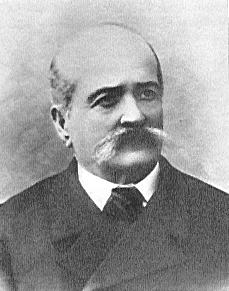
Eusebio Oehl (Lodi, 5th of December 1827 – Pavia, 10th of April 1903) graduated in Pavia in 1850; he then continued his studies in Vienna, at the Anatomy Institute directed by Joseph Hyrtl and at the Physiology Institute of Ernst Brücke.
After coming back to Pavia, he taught Histology courses, first at the Ghislieri College during the years 1854-56, and later at University in 1859-60.
In 1857 he published on the Universal Annals of Medicine his significant research on the structure of skin, later translated to German by Hamburg dermatologist Paul Gerson Unna.
He was full professor of Histology at Pavia University starting 1864, and became a main proponent of the new physiology approch of German origin. The German approach, centred on microscopic research, established itself in the 1870s.
His studies on salivation were of great relevance; he conducted his research by direct catheterization of human salivary ducts and was able to differentiate between different types of saliva, and to link them to the kind of stimulation used and to the gland under analysis.
Often times these experiments were conducted on students who volunteered, or on his servant: a syringe was inserted into one of the three salivary ducts and the saliva was collected after appropriate sensory stimulation. Oehl’s experiments anticipated by many years Ivan Petrovich Pavlov’s research, which was awarded a Nobel prize in 1904.
He conducted many other anatomy and physiology studies, particularly on the peripheral nerve.
Among his students, Giulio Bizzozero and Enrico Sertoli (who discovered the Sertoli cells, located in the testicles) went on to become undisputable protagonists of microscopic research of the second half of the XIX century.
